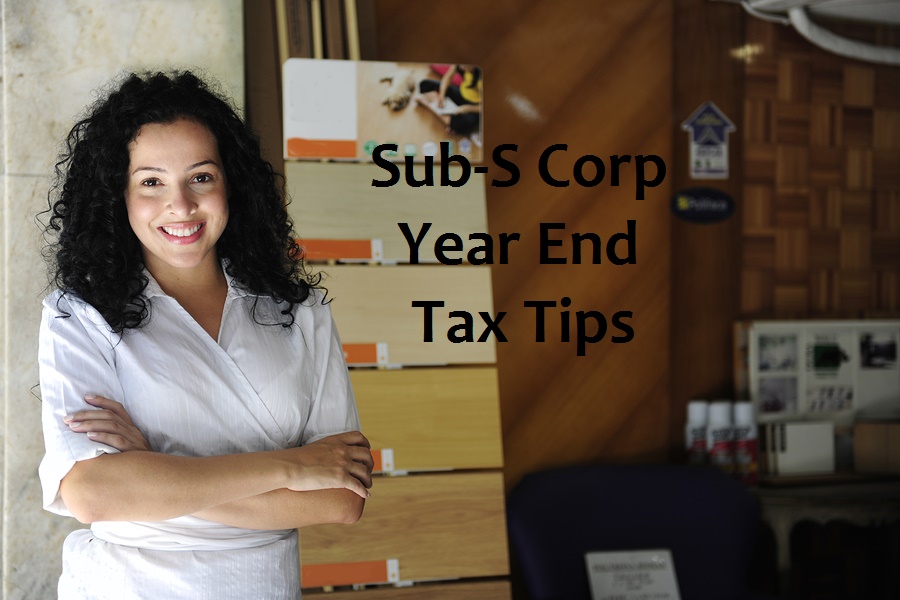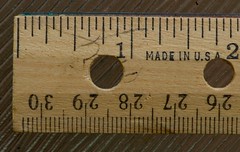
As the year comes to a close, make sure you do everything you can to reduce your tax liability.
Updated for 2016
You read a lot of news stories about year-end tax tips, but you don’t see a lot of things specifically targeted at Sub-S Corporations, and there’s nothing out there for the single owner S Corporation. It’s kind of sad because most people with Sub-S Corps are set up that way for the tax advantage. If you own a Sub-Chapter S Corporation, then you need to make sure that you maximize your deductions. These tips are especially for you:
First, and most importantly, if you’ve got a profit this year, you want to make sure that you are paying yourself some type of payroll. This is one of the most common mistakes that S Corps make. The point of having an S Corp is to protect some of your income from self employment taxes. (Notice I said some, you can’t protect yourself from all self employment tax.) S-Corporaton owners need to pay themselves a salary. In the early years of a business, there’s often a loss and the salary isn’t important, but once the business is in the profit side, the owner should be paying a wage that is commensurate with what he or she’d be earning if he worked the same job for someone else. If you don’t do this, the IRS can come back and assess self-employment tax on 100% of your S corp profit. That would completely defeat the whole purpose of being an S Corp, so that’s the first thing you want to handle.
Reimburse yourself for your employee expenses: Write yourself an expense report and have the S Corp write you a check. For example: let’s say you took a business trip for a convention and your travel expenses cost $1000. You paid it out of your own pocket because it was easier at the time and you just figured that you’d write it off on your taxes later. But that’s a stinky idea. Here’s why:
Even though you are the owner of the business, you are also an employee. As an employee of the S corp, you would put the $1000 travel cost on your schedule A as an employee business expense. When you do it that way, the expense would be subject to the 2% limitation rules. Meaning, you can only deduct expenses that are over 2% of your adjusted gross income. The higher your income, the smaller the deduction you get to claim. If you pay Alternative Minimum Tax, or don’t itemize your deductions, you could even get a zero tax benefit from putting it on your schedule A. So putting the expense on your schedule A gives you a much smaller tax benefit than if it’s on your S Corp return.
When you do an expense report, and reimburse yourself through the business you get 100% of the allowable business deduction. Isn’t that much better?
Next up: Pay your health insurance through your S Corp: This is a little convoluted, but stick with me. If you claim this deduction, you want to do it right. As an employee of your S Corp, you can’t claim the self-employed health insurance deduction like you could as a sole proprietor. Your health insurance would go on your schedule A subject to a 10% limitation before anything could be deducted (for most people that’s a zero deduction.) We don’t like zero deductions! So you have to do the S-Corp health insurance dance. It goes like this:
Your S Corp pays your health insurance, then it comes to you as a taxable fringe benefit. When you do it this way you get to deduct the cost of your health insurance on page 1 of your tax return (just like a sole proprietor)—a much better place to put a deduction. You do not pay FICA on your health insurance.
So let’s say your wages from your S corp are $10,000 and your health insurance is $5,000. In box 1 of your W2, it would say wages $15,000. In boxes 3 and 5 – the Social security and medicare wages, it would say $10,000. You would then deduct the $5,000 that you paid in health insurance under the self employed health insurance line. (Line 29 in the 2015 return.) Yes, I realize that this sounds like a cockamamie way to do the accounting for your health insurance–but those are the IRS rules. ‘Nuf said, right? And while I realize that this sounds crazy, that’s really how you do it.
Another expense you don’t want to miss out on is to reimburse yourself for your home office deduction: It’s hard to claim a home office deduction on a Sub-S corporation. Like other employee expenses, it would go on your Schedule A and be subject to the 2% limitation rules like any other employee business expense. Many accountants won’t even touch a home office for a Sub-S Corporation.
Some people try to charge rent to their S Corps for their home office, but that’s just moving your income from one taxable entity to another so you don’t really save anything on you taxes that way either..
What you want to do is reimburse yourself for your home office deduction in a fully accountable plan. That’s a phrase that you want to remember: fully accountable plan. Prepare a form 8829 Home Office form like you were doing it for a sole proprietorship and use that report to determine how much you should reimburse yourself for your home office. Remember, it’s a reimbursement, not a rent payment. It reduces taxable income to the company, but it is not taxable to you because you have “accounted” for the expenses. For more information about home office deductions, you might want to read this post: How to Boost Your Home Office Deduction
If you’re interest in more year end tax tips, you might also want to check out: Year End Tax Tips for Tiny Business Owners.




